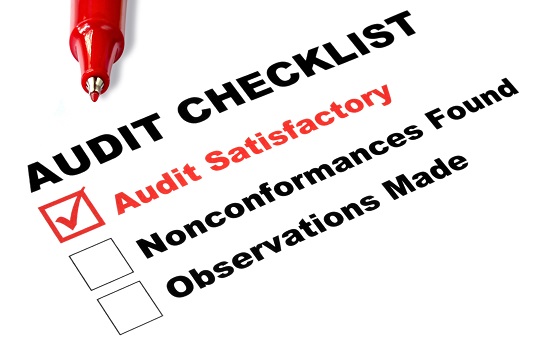For the past 8 years, I have had the opportunity to help hundreds of plan sponsors to design and manage successful 401(k) plans. In my opinion, successful plans for small to mid-size employers typically display the following attributes.
1. The costs, fees and expenses of the plan are reasonable.
Understanding the importance of plan costs, expenses and fees is one of the most important duties of plan sponsors and fiduciaries. When asked about plan costs, some plan sponsors actually think their plan is free. This perception is most common when their providers are paid by hidden revenue sharing arrangements.
One of the key services I provide to employers is an annual evaluation of overall plan expenses and a determination as to whether they are reasonable. Your plan is not required to be the lowest-cost in its peer group, but if your fees fall in the highest quartile, it is a red flag that cannot be ignored.
In reality, receiving more and better services as well as retaining providers who are better positioned to help a plan achieve its goals are all valid reasons to pay a little more. Hiring a provider because he or she is a family friend or because they have provided personal financial services to the CEO or owner are not sufficient reasons and may in fact increase your fiduciary liability.
Finally, if you or your advisor is not actively monitoring plan costs and documenting the process, you need to begin to do so. To the regulators, process trumps results!
2. A high percentage of eligible employees participate in the plan.
Employers who sponsor 401(k) and other retirement plans such as defined benefit cash balance plans for their highly compensated employees have made a substantial investment of time and money to provide this benefit. The best plans should have at least 85% of eligible employees who are participating in making payroll contributions.
These plans are effective in communicating the virtues of saving for retirement. In addition, they usually feature generous employer matching contributions that incentivize participants and build in automatic enrollment options for newly eligible participants.
3. New employees roll money into the plan. Departing employees leave their balances in the plan.
The best plans have characteristics that set them apart. A plan that has an open-architecture platform which provides access to outstanding investment options and low cost share classes becomes a magnet for other retirement assets.
New employees who compare these lower cost options to “retail” IRA accounts with limited investment menus are eager to combine other qualified accounts with their company’s 401(k) plan. When these employees terminate employment, they are comfortable in maintaining their plan balances because they view management as a friend, not an enemy.
4. Employees understand the plan.
The best plans effectively communicate how the plan works to their employees. These companies are intentional in communicating the benefits of participating in their plan to both new recruits and to retain their best talent.
These employers include a clear and simple description of plan benefits, with emphasis on employer contributions, vesting schedules and professional advice available to participants. More importantly, employees who are on track to achieving their retirement goals become the strongest advocates for participation.
5. The fund design and investment lineup has a home for everyone.
There are different types of investors in every plan.
Some want to be well diversified over the core funds lineup and need professional allocation tools to achieve a successful outcome.
Index investors are interested in utilizing low-cost index instruments in a variety of asset classes to properly diversify their accounts.
Some participants are opportunistic and look for unique specialty investments in the plan.
Finally, almost every plan has a high percentage of participants who don’t want to get into the weeds of investment allocation and prefer balanced, “do it for me” default options such as target date funds.
In addition, many professional service organizations which I assist offer additional “hybrid” plans in addition to a traditional 401(k) to allow highly compensated members to boost their levels of tax-deferred savings. These individuals often find themselves behind in saving for retirement in their early 40’s or 50’s due to lower compensation levels and debt reduction needs earlier in their careers. Combining a defined benefit cash balance plan with the 401(k) becomes not only a significant tax saving tool for these members but an important competitive advantage in recruiting and retaining talent for their firms.
In most cases, the greater the number of participants in your plan, the broader and more flexible your investment menu should become.
6. The leaders in your organization talk about the plan.
This trait can sometimes be difficult to measure. Companies that care about their human capital and talent take personal pride in their benefits package. These leaders not only find a way to talk about the plan at official corporate gatherings, but plan benefits are featured as a recruiting and retention tool in their everyday conversations. Mobile apps for successful plans can be used to instantly demonstrate that leaders are not only engaged with the plan, but well on their way to a successful retirement.
7. The plan’s fiduciaries understand their role and document their decisions.
Most plan sponsors need some fiduciary education and guidance in what is expected from them. Many simply rely on their providers and trust in the myth that they can outsource all of their fiduciary duties. In reality, this attitude can be extremely dangerous. Many providers are not acting in a fiduciary role to the plan, including plan advisors who are affilliated with broker dealer firms.
Plan sponsors should know and understand the details of their plan document and the disclosure notices which must be provided to participants. They should monitor plan investments and fees and have a process in place which documents these duties. If they do not have the knowledge or experience to carry out these responsibilities, they are required to hire experienced providers who do. In my experience, plan sponsors of the best plans have established a process for all of these important functions.
8. The investment advisor is a fiduciary and specializes in company sponsored retirement plans.
The best plans hire advisors who specialize in the expertise and functions most important to plan sponsors. These include plan design, creating Investment Policy Statements (IPS), selecting and monitoring of plan investments, provider search, monitoring plan expenses, fiduciary guidance and effectively communicating plan benefits to participants. In the best plans, the advisor usually takes a proactive role as the “point man” or plan quarterback.
Plans which hire advisors affiliated with broker-dealer firms are exposed to conflicts of interest which impact key decisions. If your advisor is paid based on revenue sharing arrangements with a mutual fund company or recordkeeper, you have a fiduciary duty to find a new provider.
9. Participants have access to tools and technology that help them stay on track to meet their goals.
Successful plan providers provide useful online tools that keep participants informed and on-track. Most recordkeepers today offer real-time access to participant information such as deferral rates, plan allocation tools, re-balance features and transparent fee disclosure. Mobile apps that allow participant access are now available from most recordkeepers. Advisory services that calculate and project monthly retirement income allow participants to make more informed retirement choices.
10. The plan sponsors and advisor have a written Investment Policy Statement that guides investment decisions.
Although not specifically required by ERISA guidelines, the best plans have adopted a written Investment Policy Statement which defines the criteria for all investment decisions. Investment asset classes are defined in this document and based on the demographics and investment sophistication of participants.
As an example, our plans evaluate each investment by 11 different criteria such as manager tenure, minimum net assets, net expense ratios, style and composition, 1,3 and 5 year performance as well as measures of risk such as alpha and sharp ratios. When current investments fail to measure up to these standards, they are placed on a watch list for further evaluation or deleted and replaced.
The best plans employ a rigorous and disciplined approach to investment decisions and document this process on a consistent basis. It is important to understand that ERISA does not hold plan sponsors or providers to a performance standard in regard to investment returns. But it does emphasize that there is an investment process that is consistently adhered to by plan fiduciaries.
This is not a complete list!
In reality, there are probably additional attributes that are shared by the best 401(k) plans. However, I have found these ten attributes to be universally shared by successful plans.
Brian C. Rall
President – Strategic Retirement Partners, LLC

Strategic Retirement Partners is an independent, boutique investment advisory and consulting firm providing plan design, vendor search, investment selection, fiduciary guidance and participant education for company sponsored retirement plans.
Strategic Retirement Partners, LLC is a registered investment advisor in the State of Washington. The investment advisor may not transact business in states where it is not appropriately registered, excluded or exempted from registration. Any information contained herein or on SRP’s website is provided for educational purposes only and is not intended to make an offer or solicitation for the sale of any specific securities, investments, or investment strategies. Investments involve risk and unless otherwise stated are not guaranteed. SRP does not provide legal or tax advice and clients should consult their attorneys and CPA for any strategy discussed herein or on this website.


